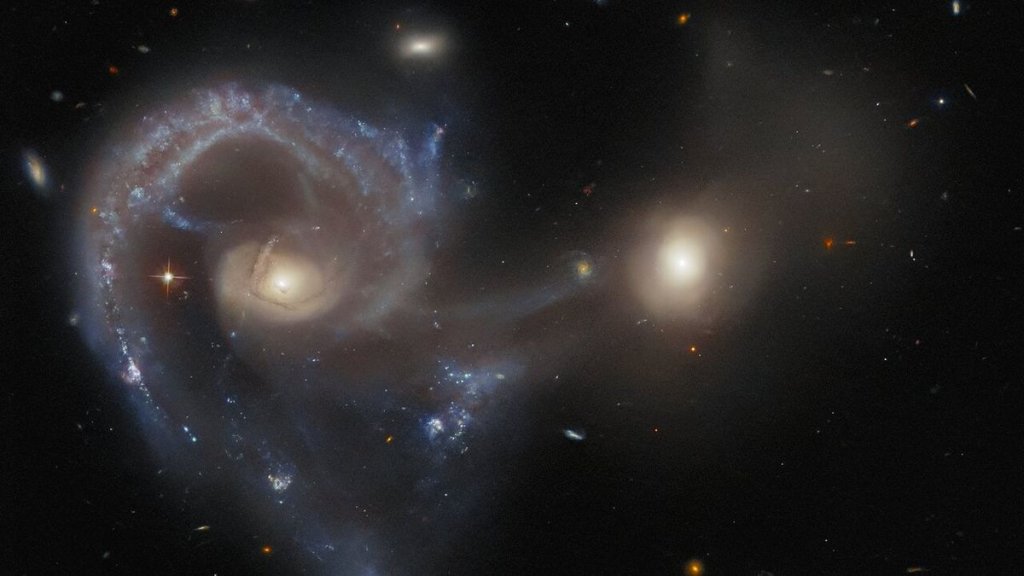
New Hubble image reveals intergalactic bridge between two merging realms (Image Credit: Space.com)
A faint “bridge” of gas connects two colliding galaxies in a new photo from the Hubble Space Telescope.
The Arp 107 system includes a pair of galaxies that are in the process of merging. Located about 465 million light-years from Earth, the galactic duo is connected by a tenuous stream of dust and gas.
Hubble, a joint mission led by NASA and the European Space Agency, snapped this new view of Arp 107 using its Advanced Camera for Surveys. The larger galaxy, captured on the left of the image, boasts one large spiral arm that curves around the galactic core. Known as a Seyfert galaxy, this cosmic realm is home to an active galactic nucleus.
Related: The best Hubble Space Telescope images of all time!
“Seyfert galaxies are notable because despite the immense brightness of the active core, radiation from the entire galaxy can be observed,” ESA officials said in a statement. “This is evident in this image, where the spiraling whorls of the whole galaxy are readily visible.”
Active galactic nuclei exhibit an intense glow associated with material falling into the supermassive black hole at the center of the galaxy. In fact, the radiation emitted by an active galactic nucleus can outshine the combined light of every single star in its host galaxy.
The galaxy’s bright spiral arm is speckled with bright budding stars, stellar births fueled by the abundant source of material being siphoned from the smaller companion galaxy, which can be seen to the lower right of the image.
The smaller galaxy appears to have a bright core, but relatively faint spiral arms as it is being absorbed into the larger galaxy. The stream of material connecting the merging galaxies hangs delicately beneath the pair in the new Hubble visual, which ESA released on Sept. 18.
Arp 107 belongs to a group of galaxies known as the Atlas of Peculiar Galaxies, which was compiled in 1966 by Halton Arp. The new Hubble photo was taken as part of a larger initiative to observe understudied members of the Arp catalog.
“Part of the intention of the observing programme was to provide the public with images of these spectacular and not-easily-defined galaxies,” ESA said in the statement.





